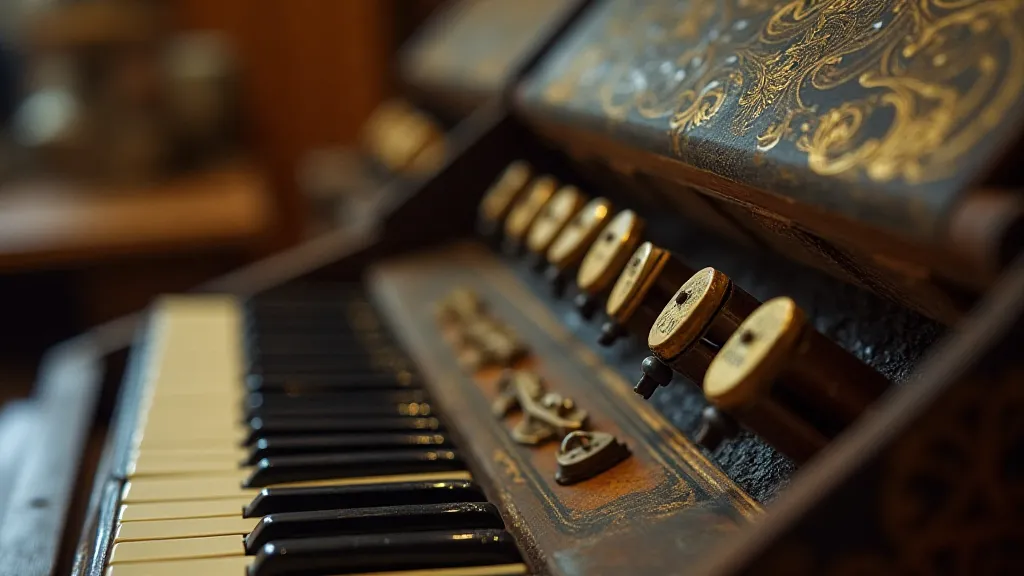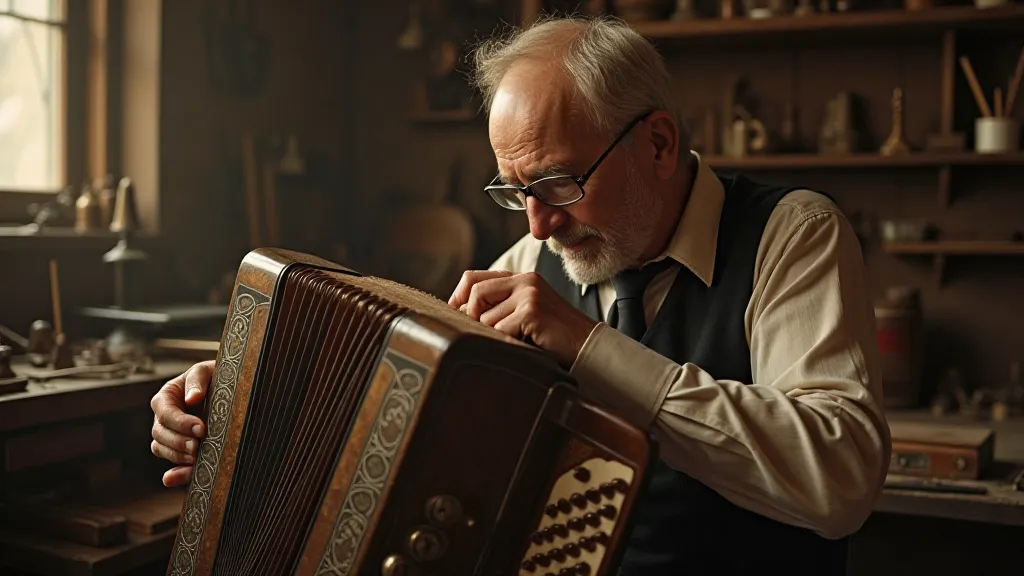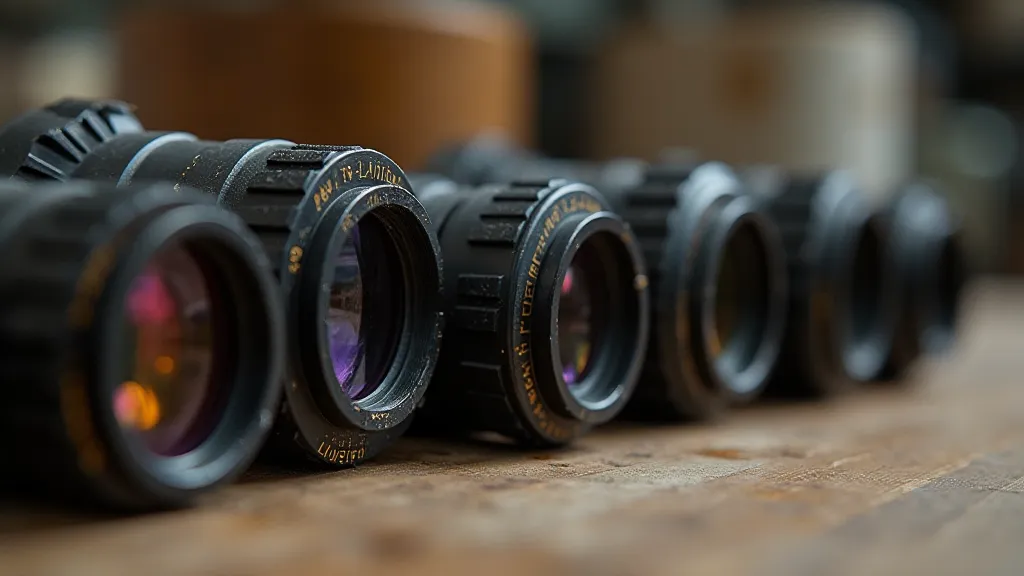The Allure of the Eyepiece: A Journey Through Magnification
There’s a certain magic held within the simple act of looking through a telescope. It’s a gateway to cosmic wonders, a chance to witness the swirling majesty of nebulae and the diamond-dust shimmer of distant galaxies. But that magic isn’s solely dependent on the telescope itself. It's profoundly influenced by a smaller, often-overlooked component: the eyepiece. For those of us drawn to the night sky, understanding eyepieces isn’t just a technical matter; it’s about unlocking a deeper connection with the universe.
My own fascination with intricate mechanisms began long before I ever peered through a telescope. It started with my grandfather's antique accordion. A behemoth of polished wood, leather bellows, and countless keys, it wasn’t just an instrument; it was a testament to the ingenuity and patience of a bygone era. Each button was carefully inlaid, each reed meticulously tuned, and the bellows, a marvel of engineering, required a delicate touch to coax forth its rich, melancholic tones. Restoring it was a slow, painstaking process, demanding a deep appreciation for craftsmanship and a willingness to learn from the past. It's that same respect for precision and artistry that I now find in a well-crafted telescope eyepiece.
The accordion, like an eyepiece, is a system of lenses or reeds working in harmony to transform a source—air or light—into something beautiful. The connection may seem tenuous, but it highlights a common thread: a dedication to meticulous detail and a profound understanding of physical principles. The sheer complexity of its design begs the question of how such things are made. For those interested in the broader landscape of optical design, you might find some insights into the principles of observation described in "The Telescope's Gaze: More Than Just Optics – The Psychology of Observation".

The Basics: Focal Length and Magnification
So, what exactly *is* an eyepiece? Simply put, it's the part of the telescope you look through. It takes the image formed by the telescope’s objective lens or mirror and magnifies it for your eye. The key characteristic of an eyepiece is its focal length, measured in millimeters (mm). A shorter focal length eyepiece provides higher magnification, while a longer focal length eyepiece offers lower magnification and a wider field of view.
The formula is straightforward: Magnification = Telescope Focal Length / Eyepiece Focal Length. For instance, if your telescope has a focal length of 1000mm and you use a 10mm eyepiece, the magnification is 100x. A 5mm eyepiece would give you 200x magnification. But higher magnification isn’t always better. It’s a delicate balance.
The Pitfalls of Excessive Magnification
One of the most common mistakes among amateur astronomers is chasing high magnification. The truth is, magnification beyond a certain point reveals little and diminishes image quality significantly. Atmospheric turbulence ("seeing") and the limitations of your telescope's aperture become the limiting factors. Pushing the magnification too high simply magnifies these imperfections, resulting in a blurry, frustrating view. It's like trying to hear a faint whisper in a crowded room – more volume doesn’t make it clearer; it just adds more noise.
Think back to that accordion. A skilled player can coax a wide range of expressive tones from the instrument, but forcing it beyond its natural capacity only results in a harsh, unpleasant sound. Similarly, with telescopes, a good view is about clarity and detail, not just raw power. Understanding your telescope's aperture and the seeing conditions is vital in choosing the appropriate eyepiece. The principles behind maximizing those qualities can be daunting at first, but if you're looking to build your own telescope, you can find some beginner-friendly guides on "DIY Astronomy: Building Your Own Telescope – A Beginner's Guide".
Beyond Focal Length: Field of View and Eye Relief
While focal length dictates magnification, other factors contribute significantly to the overall observing experience. Field of view (FOV) refers to the area of the sky you can see through the eyepiece. A wider FOV is generally more comfortable to observe through, allowing you to easily locate objects and track them across the sky. A narrow FOV can feel restrictive and disorienting, especially when observing objects that move quickly.
Eye relief is the distance between the eyepiece lens and your eye. Shorter eye relief eyepieces can be uncomfortable to use, requiring you to get very close to the eyepiece, which isn’t ideal, especially if you wear glasses. Longer eye relief eyepieces offer a more comfortable viewing experience, allowing you to observe without straining your neck or eyes.

Eyepiece Designs: A World of Variety
Over the years, numerous eyepiece designs have emerged, each with its own strengths and weaknesses. Common types include Plössl, Orthoscopic, and wide-field eyepieces. Plössl eyepieces offer a good balance of magnification, FOV, and affordability, making them a popular choice for beginners. Orthoscopic eyepieces provide high magnification with a smaller FOV and longer eye relief. Wide-field eyepieces, as the name suggests, offer a wider FOV, providing a more immersive observing experience. More modern designs, such as Logithics and Radian, often incorporate multiple lens elements to correct for aberrations and enhance image quality.
Restoration & Collecting: The Patience of a Craftsman
Just as with antique accordions, finding and restoring vintage telescope eyepieces can be a rewarding experience. Many early eyepieces were beautifully crafted, with intricate designs and high-quality optics. However, they often suffer from age-related deterioration, such as fungus, haze, and separation of lens elements. Restoring these eyepieces requires patience, a steady hand, and a good understanding of optics. Cleaning and re-cementing lens elements can breathe new life into these forgotten treasures, allowing you to experience the night sky through the eyes of astronomers past. The choices you make when restoring a piece of optical equipment are important, and if you're seeking a comprehensive understanding of the options, you might want to explore how dedicated observers maximize light gathering to reveal fainter objects - a concept thoroughly explained in “Aperture's Embrace: The Power of Gathering Light”.
The process of understanding antique optics is not unlike understanding the nuances of an old accordion. Each step – assessing the condition of the lenses, carefully disassembling the eyepiece, meticulously cleaning each component – requires a deep respect for the craftsmanship that went into its creation. And the satisfaction of seeing a restored eyepiece revealing the glories of the cosmos is a uniquely gratifying experience.

Delving Deeper: Aberrations and Optical Corrections
Beyond the basic designs, the history of eyepieces is inextricably linked to the ongoing quest to correct optical aberrations. Spherical aberration, coma, astigmatism – these imperfections can all degrade image quality. Early eyepiece designs often suffered from these issues, making objects appear distorted or blurry. The invention of the achromatic doublet, which combines lenses of different types of glass to minimize chromatic aberration, was a major breakthrough. This innovation significantly improved the clarity and color fidelity of astronomical observations. Further advancements, such as the incorporation of aspherical surfaces and multiple lens elements, continue to push the boundaries of eyepiece performance.
The Future of Eyepiece Design
The landscape of eyepiece design is constantly evolving. Modern manufacturers are exploring new materials, coatings, and optical configurations to enhance performance and address the limitations of traditional designs. Computer technology has revolutionized how we view the cosmos, and the psychology behind observing the night sky is equally fascinating; "The Telescope's Gaze: More Than Just Optics – The Psychology of Observation" dives into this very topic.
The Allure of the Eyepiece: A Journey Through Magnification
There’s a certain magic held within the simple act of looking through a telescope. It’s a gateway to cosmic wonders, a chance to witness the swirling majesty of nebulae and the diamond-dust shimmer of distant galaxies. But that magic isn’s solely dependent on the telescope itself. It's profoundly influenced by a smaller, often-overlooked component: the eyepiece. For those of us drawn to the night sky, understanding eyepieces isn’t just a technical matter; it’s about unlocking a deeper connection with the universe.





